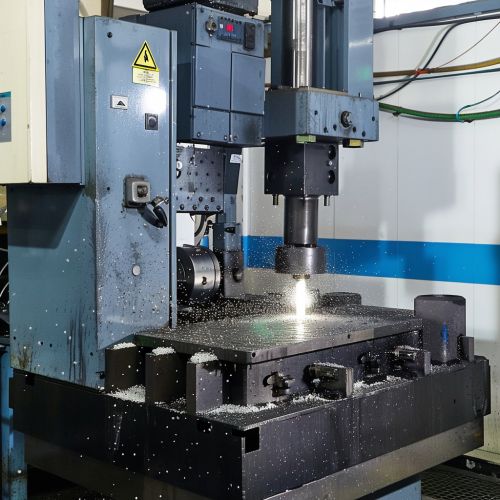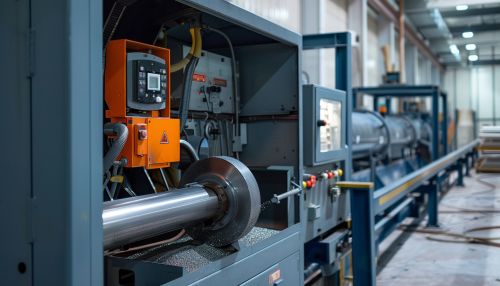Shot Peening
Introduction
Shot peening is a cold working process used to produce a compressive residual stress layer and modify the mechanical properties of metals and composites. It entails impacting a surface with shot (round metallic, glass, or ceramic particles) with force sufficient to create plastic deformation. Plastic deformation involves the alteration of the internal microstructure of a material, leading to changes in its mechanical properties such as toughness and hardness.
Process
In shot peening, small spherical shot bombards the surface of a part. During the process, each piece of shot that strikes the material acts as a tiny peening hammer, imparting a small indentation or dimple on the surface. To create this dimple, the surface layer must yield in tension. Below the surface, the material attempts to restore its original shape, thereby producing beneath each dimple a hemisphere of cold-worked, highly stressed, compressively stressed material.
Mechanics of Shot Peening
Shot peening is a mechanical method of imposing residual stresses in the surface layers of a material. These stresses are compressive in nature, which means they act to compress the material, making it more resistant to stress-corrosion cracking, fatigue, and other common types of premature failure. The magnitude and depth of the compressive residual stresses that are induced by shot peening are a function of the peening intensity and the material's mechanical properties.
Shot Peening Equipment
Shot peening equipment varies in complexity. At its simplest, the process can be performed manually with a shot peening hammer. However, for industrial applications, more complex machinery is typically used. This machinery can be classified into two main types: air blast systems and centrifugal wheel systems.


Applications of Shot Peening
Shot peening is used in a wide variety of industrial applications where the material surface is subjected to high cyclic stresses. It is commonly used in the automotive and aerospace industries, where components such as gears, springs, and turbine blades are routinely peened to increase their resistance to fatigue and stress corrosion cracking. Other applications include medical implants, structural steel, and tooling.
Advantages and Disadvantages
Like any industrial process, shot peening has both advantages and disadvantages. The primary advantage is the significant increase in the fatigue life of the peened component. However, the process can be costly and time-consuming, and may not be suitable for parts with complex geometries or made from certain materials.
